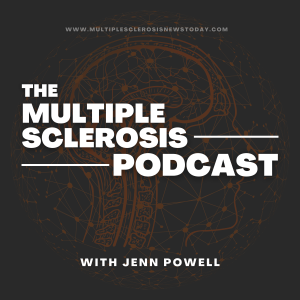Rituximab Effects Evident at Low Dose, Persist After Treatment Stops

ChristianChan/Shutterstock
Rituximab shows long-term benefits, even among people with relapsing-remitting multiple sclerosis (RRMS) and clinically isolated syndrome (CIS) who stopped its use or reduced their dose, a study reported.
Researchers found little evidence of disease reactivation among patients who discontinued the medication, and an adequate inflammatory disease suppression among those whose annual doses were under 1,000 mg.
The study, “Discontinuation and dose reduction of rituximab in relapsing–remitting multiple sclerosis,” was published in the Journal of Neurology.
Rituximab, an approved treatment for certain blood cancers, works to deplete B-cells — a type of immune cell known to drive inflammation in MS — by targeting a protein on their surface called CD20. Investigational for MS, it has been tested in clinical trials, and is often used off-label to treat patients.
Data from a 48-week Phase 2 study (NCT00097188) in RRMS patients showed that rituximab suppressed their inflammatory disease activity. Other studies have also shown that rituximab is a safe and effective treatment option, with a low discontinuation rate.
But data are limited concerning the effects of stopping the therapy or dropping annual doses below 1,000 mg.
Researchers at the University Hospital of Umeå, in Sweden, examined records of the 225 RRMS and CIS patients treated there with rituximab, and who had discontinued treatment at any time or reduced their dose to a mean of less than 1000 mg yearly.
The vast majority, 90%, of RRMS patients at that hospital are given rituximab, the team wrote. The common treatment regimen followed consists of a single, 1,000 mg rituximab infusion as early as possible after disease onset, followed by 500 mg every six months for three years. For individuals with a stable disease course at this point, the dose then drops to 500 mg per year.
Patients were 38.4 years old on average, 72% were female, and they had lived with MS for a median of 5.8 years. Average follow-up time was 6.5 years.
Across the follow-up period, 191 of these 225 patients lowered their dose to under 1,000 mg a year (low dose), 36 reduced it to 500 mg or less (super low dose), and 111 patients stopped the therapy.
Among those who discontinued rituximab at some point, the main reasons for doing so were participation in other studies or stable disease.
 Check out the new MS News Today podcast
Check out the new MS News Today podcast
Researchers noted that the field lacks a clear definition of “stable disease course,” but that as a rule of thumb, patients without signs of MS activity for three years are considered for dose reduction.
Relapses occurred 25 times during the study period — 20 while patients were receiving the full dose, two during low-dose treatment, and three while off treatment.
Most participants (166, or 73.8%) had 10 or more MRI T2 lesions (representative of disease burden) at the study’s start, indicating active inflammation.
After either dose reduction or discontinuation, MS activity reappeared in 15 patients, but not in the other 210. One-third of these 15 people (33%) had high disease activity during their full-dose period, and higher starting scores on the expanded disability status scale, indicating greater disability.
Seven of these 15 patients were on low-dose rituximab, one had changed to a super-low-dose regimen, and the remaining seven were off treatment when their MS activity returned. Reasons for their therapy dose reduction and discontinuation included stable MS, study protocols that conflicted with the medication, and pregnancy.
MRI scans identified new or enlarged T2 lesions in 11 of these individuals, and two of them showed active lesions.
“The results indicate that rituximab has long-term effects on inflammatory disease activity and that disease reactivation is rare in previously rituximab treated RRMS and CIS patients who discontinued treatment,” the investigators wrote.
“Our study also implies that a low-dose maintenance treatment protocol [less than 1000 mg per year] may be sufficient for RRMS and CIS patients with stable disease,” the team concluded.






